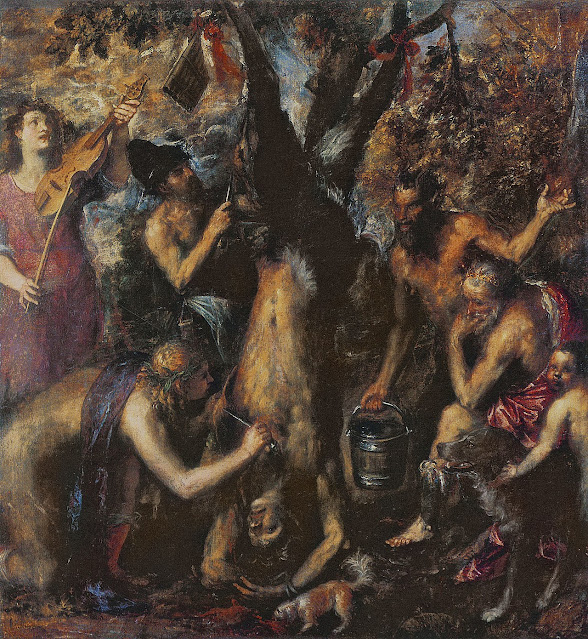Controversies Explained and the Early History of the Violin

Holman argues that stringed instruments fitted well within ideas from ancient myth in which string players, chiefly Apollo and Orpheus tended to be seen as representative of virtue, versus wind players including Pan and Marsyas being of more questionable morals. In the myth of the death of Medusa, it was the Goddess of War, Athena in grief, who promptly dropped her spear and began shaping a pair of reeds into its hollow tube to create an aulos to transform all the sorrow and grief of the world into laments and dirges both to break and then heal the heart of all who heard them. Thereupon, according to myth she stopped playing either because she didn't like how she looked in the mirror, or because Hermes made fun of how her cheeks puffed out. The result either way was to temper the myth against feminine virtue. Discarded the instrument remained in the woods until it was picked up by Marsyas and in turn it was his vanity in playing them that caused him to challenge the Gods and forfeit his life in the most gruesome way, being flayed alive. With a renewed interest in Greek mythology which continually viewed stringed instruments with virtue in contrast to myth surrounding wind instruments, it followed that the idea of supplanting wind instruments with stringed instruments gathered momentum as soon as it arrived within the cultural consciousness of the Renaissance, spreading naturally around the rest of Italy and Europe.
 |
| Titian's Flaying of Marsyas painted around 1570. |
Although this seems to be the most robust interpretation of the early origins of the violin, it is not without its problems and a number of controversies or counter-narratives continue to hold currency. Karel Moen's a Belgian Museum curator was moved in the 1990s to publish a number of works trying to debunk what he saw as a myth that put undue prominence to a narrative of the Northern Italian Renaissance serving as the crucible for this form of musical culture. Although I fundamentally disagree with the directions that his research ended up in, nevertheless, they come from a good place, and the unquestioned ideology that places the origin in the heart of Northern Italy has not been as robustly tested as we might be led to imagine. There are seeming contradictions and counter-narratives that deserve a fuller study, even if only to arrive at a more secure understanding of the status-quo. Moreover, if we are to look at the history of art in a broader context, to a great extent the early Renaissance triumphs in artistic style come from the merging of Northern European and Italian ideas: Antonello de Messina (1430 - 1479) a direct influence to the generation of Leonardo, Raphael and Michelangelo, in turn was deeply motivated by his experiences of Netherlandish art. Likewise, fifteenth-century Northern European composers, Guillaume du Fay and Josquin des Prez amongst them, spent significant parts of their careers travelling to Italy to hold significant positions in the papal and noble musical establishments.



Comments
Post a Comment